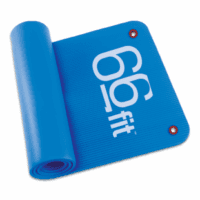Eccentric Strengthening
Article by John Miller

Eccentric Strengthening: Enhancing Muscle and Tendon Health
Understanding Eccentric Strengthening
Eccentric strengthening, a muscle contraction type, extends the muscle while generating tension. It contrasts with concentric contractions, where muscles shorten during force application. This training method, gaining popularity for its effectiveness, boosts muscular strength, power, and endurance.
Why Emphasise Eccentric Strengthening?
Eccentric training is essential in fitness programs, targeting muscles’ non-contractile elements like tendons and connective tissues. These often overlooked components are critical for joint stability and injury prevention. Eccentric strengthening not only enhances muscle functionality but also minimises tendon injury risks.
Key Benefits of Eccentric Training
- Improved Muscle Function: It bolsters the strength and endurance of tendons and connective tissues, thus enhancing joint stability, reducing injury risks, and boosting athletic performance.
- Muscle Hypertrophy: Eccentric training outperforms concentric in inducing muscle growth, thanks to greater force production and muscle strain.
- Tendon Injury Prevention: Effective for both preventing and rehabilitating tendon issues, eccentric training promotes collagen synthesis, fortifying tendons.
Integrating Eccentric Strengthening
Include these methods in your regimen:
- Eccentric Exercises: Perform movements like bicep curls with a controlled, slow lowering phase.
- Plyometrics: Combine rapid eccentric contractions with explosive concentric ones, such as box jumps.
- Isometric Holds: Maintain positions like wall sits, where muscles stay lengthened.

Benefits of Physiotherapist-Prescribed Eccentric Exercises
When a physiotherapist prescribes eccentric exercises, patients reap significant benefits. These exercises are crucial in strengthening muscles and tendons, especially useful for rehabilitating injuries like tendinopathies. Eccentric training excels in promoting muscle hypertrophy more effectively than concentric exercises, leading to increased muscle mass and strength. This training also enhances muscle control and coordination, improving overall functional abilities and reducing the risk of re-injury.
Physiotherapists’ expertise in customising eccentric exercises to individual needs ensures patients engage in the most effective and safe manner. They can adjust the intensity and progression of exercises to align with the patient’s rehabilitation stage and physical capabilities. This personalised approach maximises the benefits while minimising the risk of further injury. Additionally, physiotherapists provide valuable guidance on proper technique, which is crucial for the effectiveness of eccentric exercises. With their support, patients can achieve better outcomes in recovery and long-term musculoskeletal health.
Conclusion
Eccentric strengthening, vital for fitness, enhances muscle functionality, fosters growth, and guards against tendon injuries. Consult a physiotherapist for a personalised program to maximise benefits.
What to Do?
If you’re looking to incorporate eccentric strengthening into your fitness routine, it’s wise to seek professional advice from a physiotherapist. They can tailor a program to your specific needs, ensuring safe and effective training.
Related Articles
- Tendinopathy: This comprehensive page offers detailed insights into tendinopathy, a common condition affecting tendons. It discusses the causes, symptoms, and various treatment options, including the role of eccentric strengthening exercises in managing and rehabilitating tendon injuries. Eccentric training is particularly effective in stimulating collagen synthesis in tendons, thus playing a crucial role in both prevention and recovery from tendinopathy.
- DOMS – Delayed-Onset Muscle Soreness: This piece explores the concept of DOMS, which is related to exercise-induced muscle pain, especially following activities with an eccentric component. The article provides insights into the causes and management strategies for DOMS, making it a valuable read for anyone experiencing post-exercise soreness.
- Calf Strain & Calf Tear: This article addresses common causes of calf pain, focusing on conditions like calf muscle strain and compartment syndrome. It offers a comprehensive guide from a physiotherapist’s perspective on identifying and managing these conditions.
- Hamstring Strain: Highlighting the effectiveness of eccentric strengthening exercises in hamstring rehabilitation, this article covers how such exercises can reduce re-injury rates and improve recovery times. It emphasises the importance of individualised rehabilitation programs for effective treatment.
- Cramps in Athletes: Focusing on muscle fatigue, dehydration, and lack of electrolytes as causes of cramps, this article is particularly relevant for athletes. It offers advice on proper hydration and balanced nutrition to prevent and relieve cramps.

















































































